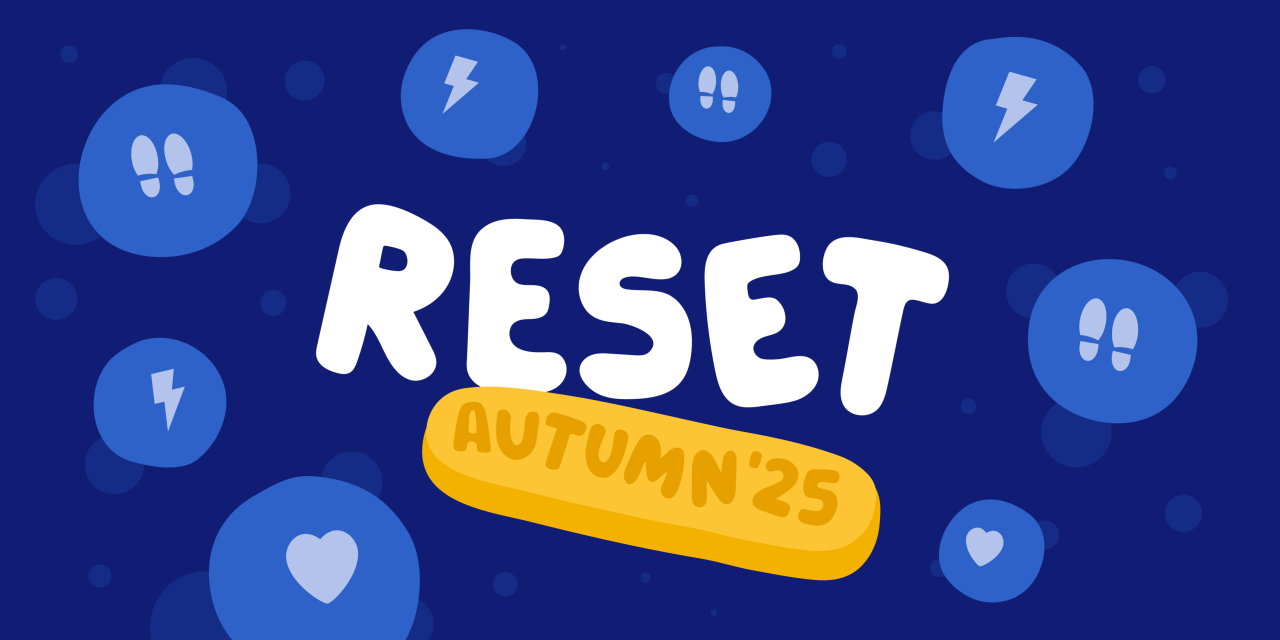
The Science of Reset: Why Autumn Is the Best Season for Habit‑Building
Every September I watch the same pattern: teams return from summer, calendars tighten, and everyone feels a quiet urge to “get back into a rhythm.” That urge isn’t imagined—it’s a predictable human response to temporal landmarks (new months, school starts, fiscal cycles) that make our past feel “closed” and our future feel “open.” Behavioral scientists call this the fresh‑start effect, and it reliably nudges people to begin better behaviors right after recognizable resets. Autumn is the cleanest reset in the working year.
This piece is not about launching a challenge or a big program. It’s about designing the conditions—in policy, calendars, and culture—that make good habits easier to start in September and easier to keep through Q4.
Table of Contents
What “reset” means in the brain
-
New time markers increase motivation. When a moment feels like a chapter break (“new month,” “back to school”), we see our “past self” as separate and feel more willing to start fresh goals. That’s the core of the fresh‑start effect, shown across multiple datasets and contexts.
-
Habits depend on cues and context stability. Once a behavior is repeatedly paired with the same cue (place, time, preceding action), the cue itself begins to trigger the behavior automatically. Stable contexts = stronger habits.
-
How long does a habit take? There’s no magic “21 days.” In a real‑world longitudinal study, the median time to automaticity was about 66 days, with a range of ~18–254 depending on the person and behavior. Translation: plan for weeks, not days—and value consistency over intensity.
-
If–then plans work. Turning a vague goal into a specific “When X, I will do Y in place Z” (an implementation intention) significantly increases follow‑through across many behaviors.
-
Context change is an opening. The habit discontinuity hypothesis shows that when routines are disrupted (move house, change job phases), people become more receptive to new behaviors. Autumn isn’t as dramatic as moving, but it’s still a real context shift—use it.
Why autumn is uniquely “habit‑friendly”
-
Shared restart signal. Everyone recognizes September as a new chapter—no internal marketing needed. That social synchronization amplifies fresh‑start motivation.
-
More stable calendars. Summer variability gives way to steadier schedules—exactly what habits need to lock to predictable cues.
-
Light patterns that favor structure. Shorter days push us to front‑load light and movement—and daytime light exposure is linked with better sleep and higher daytime alertness in office workers. (We’ll use this as a cueing strategy below.)
-
Energy management matters more. With Q4 ahead, micro‑breaks and brief activity bursts protect vigor and reduce fatigue—small but reliable gains shown in meta‑analysis.
HR’s September Habit Design: 5 Levers to Pull
You don’t need a “program.” You need defaults that make the right thing the easy thing.
1. Cues — Create “when/where” anchors
-
Publish three company cues people can adopt immediately:
-
After logging in (8:55) → 60‑second posture reset.
-
At lunch calendar alert → 10‑minute outside light.
-
At last meeting end → write tomorrow’s top 3 (shutdown cue).
-
-
Give every team an If–Then template: “If it’s 10:30, then I walk 5 minutes around the floor.” These simple plans increase goal completion across domains.
2. Friction — Remove 3 seconds everywhere
-
Default meetings to 25/50 minutes to create natural micro‑breaks.
-
Keep wellness actions tool‑agnostic (no device required; manual is fine).
-
Put “bright‑seat” desks by windows for morning email (daylight cueing). Daylight access correlates with longer sleep and better self‑reported well‑being.
3. Feedback — Show progress simply
-
Track consistency, not just totals (e.g., “4 days this week” is a win).
-
Share one weekly slide: focus windows honored, average meeting length, and one employee quote on energy. (No personal health data required.)
4. Identity & Story — Name the chapter
-
Frame September as “Reset Season”: “We’re a team that values consistent, sustainable pace.”
-
Offer a frictionless temptation‑bundling idea employees can try: “Only listen to your favorite podcast while walking.” Bundling “want” + “should” increased gym attendance in field experiments.
5. Environment — Light, posture, micro‑movement
-
Add window‑time norms (morning admin by daylight spots) and standing zones for short calls.
-
Share a 60‑second mobility video for neck/thoracic/hips.
-
Encourage camera‑optional walking 1:1s once a week; short bouts of activity sharpen attention shortly after.
The 30/60/90 Autumn Habit Plan (org‑level, no “program” required)
Days 0–30 (September): Install cues and reduce friction
-
Switch meeting defaults; announce two daily focus windows per site/time zone.
-
Publish 3 “If–Then” habit templates (morning light, movement snack, shutdown).
-
Measure quietly: weekly energy pulse (1–5) + % meetings with buffers.
-
Manager nudge pack (verbatim scripts below).
Days 31–60 (October): Stabilize contexts and reinforce identity
-
Re‑seat 10–15% of desks nearer daylight zones or create morning “bright bars.”
-
Collect and share three employee stories about small wins (consistency, better sleep).
-
Offer a temptation‑bundling menu (podcast‑only while walking, favorite tea only after a 3‑minute stretch).
Days 61–90 (November): Automate and protect
-
Calendar‑level: auto‑insert 5‑minute buffers on recurring meetings.
-
Institutionalize one walking meeting hour per week (camera‑optional).
-
Report back to leadership with habit metrics (consistency days; focus‑window adherence; energy pulse trend).
Manager Micro‑Scripts
-
“This month we care about consistency—what’s your easiest 10‑minute activity today?”
-
“We’re moving to 25/50—use the 5 minutes to stretch or get daylight.”
-
“Focus window now; I don’t expect replies for 90 minutes.”
-
“Shutdown cue: wins, tomorrow’s top three, dim screens—then log off.”
Common September Pitfalls
|
Pitfall |
Why it happens |
Quick fix |
|---|---|---|
|
Over‑promising giant goals |
Fresh‑start hype without cueing |
Replace with If–Then plans tied to time/place; smaller, daily actions. |
|
“21‑day” myths |
Misread of habit science |
Educate: 66‑day median, wide range; praise streaks over totals. |
|
Back‑to‑back meetings |
Friction beats intention |
Enforce 25/50 defaults; track buffers as an ops metric. |
|
Late‑night bright screens |
Melatonin delay, worse sleep |
Promote a shutdown hour: dim screens + plan tomorrow. |
|
One‑size advice |
Different roles, contexts |
Provide menu‑based habits (light, movement, micro‑breaks, shutdown). |
Mini‑Guide You Can Paste to Employees
The Autumn Reset: 5 tiny habits that actually stick
-
Anchor with light (AM): Get 10–15 minutes outside or by a bright window before noon. People with more daytime light at work report longer sleep and better quality of life.
-
Use If–Then: “If it’s 10:30, I walk 5 minutes.” Specific plans beat good intentions.
-
Stack small movement: Three 10‑minute bouts (walk, stretch, yoga) often help focus shortly after.
-
Micro‑breaks > marathon sits: Take 3–5 minutes between tasks; meta‑analysis shows boosts to vigor and less fatigue.
-
Shutdown ritual: Write tomorrow’s top 3 and dim screens in the last hour of the day; your sleep will thank you.
How YuMuuv fits
You don’t need a competition to build habits. Many customers use YuMuuv simply to log tiny routines (morning light, movement snacks, shutdown cues) and swap encouragement—opt‑in, low‑pressure, no leaderboards required. If you want a gentle layer of accountability for September’s reset, we can spin up habit templates and nudges that fit the cues above and then get out of your way.
One‑page briefing for leadership
-
Why now: September’s fresh‑start effect + stable calendars = ideal habit window.
-
What we changed: Meeting defaults (25/50), two focus windows, cue‑based habits (If–Then).
-
Signals to watch: Consistency days per person/week; % meetings with buffers; weekly energy pulse (1–5).
-
Risk we’re reducing: Q4 fatigue through micro‑breaks and light‑anchored routines; evidence shows vigor benefits.
Sources (selected, for your comms or footnotes)
-
Fresh‑start effect and temporal landmarks.
-
Habit formation timeframe (median ~66 days; large range).
-
Habits rely on stable context cues.
-
Implementation intentions (If–Then) meta‑analysis.
-
Daylight exposure and sleep/alertness in office workers.
-
Micro‑breaks meta‑analysis on vigor/fatigue.
-
Habit discontinuity: behavior change is easier at transitions.
-
Temptation bundling field experiment.
Final word
Autumn isn’t just a season—it’s a natural lab for habit design. Use the fresh‑start momentum, pair it with stable cues and low friction, and protect recovery with light and micro‑breaks. Do that in late August and early September, and by November you’ll have something better than a “program”: a culture of small, sustainable habits that make the busy months feel human—and productive.
